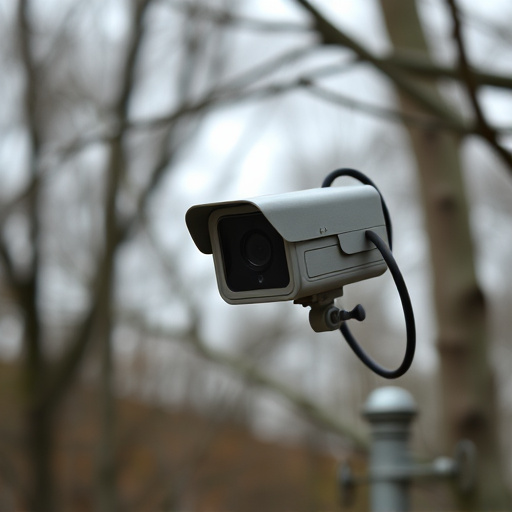Hidden cameras pose a significant threat to home privacy, but understanding their best locations empowers homeowners. Strategically placing security devices near entry points and common areas offers protection. Less obvious spots like door frames, mirrors, and false ceiling panels require scrutiny. Lights can be used to detect hidden cameras by manipulating their lenses; this simple technique provides peace of mind. Conducting thorough inspections with thermal imaging and light manipulation techniques is essential for accurate detection. Light-based camera identification enhances security, deterring malicious activities through strategic lighting placement in hiding spots.
Uncover the hidden threats lurking within your own home with our guide to disguised camera identification using light testing. Learn how to spot common locations where cameras are secretly installed and understand the science behind detecting these devices using light as a powerful tool. Discover proven testing methods for optimal results and boost your home security with light-based detection strategies that offer peace of mind in today’s digital era.
- Understanding Disguised Camera Identification
- Common Hidden Camera Locations in the Home
- Lights as a Tool for Uncovering Hidden Cameras
- Testing Methods for Best Results
- Enhancing Home Security with Light-Based Detection
Understanding Disguised Camera Identification
Disguised camera identification, also known as hidden camera detection, is a critical aspect of home security in today’s digital age. With advanced technology making it easier than ever to secretly capture footage, understanding where and how to identify these devices becomes paramount for homeowners looking to safeguard their privacy. The best hidden camera locations are often places that go unnoticed or are out of view, making them ideal spots for covert surveillance.
From smart light bulbs to seemingly innocuous decorations, there are numerous best hidden camera locations in a home. Professionals recommend being vigilant with everyday items like TV sets, clock radios, and even paintings. LED lights, for instance, can house tiny cameras within their circuitry, while mirrors with built-in sensors could be more than meets the eye. Staying informed about these tactics empowers homeowners to take proactive measures in securing their living spaces from unwanted surveillance.
Common Hidden Camera Locations in the Home
In the quest for enhancing home security, understanding common hidden camera locations is paramount. These clandestine devices can be installed in various discrete spots to capture activities within a residence without raising suspicion. One of the best hidden camera locations home security enthusiasts often recommend is near entry points like doors and windows. Strategically placed, these cameras can deter potential intruders and provide valuable footage in case of an unauthorized entry attempt.
Another frequently overlooked yet effective best hidden camera locations home security measure is within common areas such as living rooms and kitchens. These spaces are hubs for family interactions and daily routines, making them ideal spots for discreet surveillance. Additionally, focusing on less obvious areas like above door frames, behind mirrors, or inside false ceiling panels can offer more surprises for would-be thieves, adding an extra layer of protection to your home security setup.
Lights as a Tool for Uncovering Hidden Cameras
Lights play a pivotal role in identifying hidden cameras, offering a unique and often overlooked method for enhancing home security. By understanding how lights interact with camera lenses, one can uncover devices strategically positioned to capture private moments. The reflection of light off tiny camera sensors or lenses can create subtle visual artifacts, revealing their presence even when they’re designed to be imperceptible.
In the quest to secure your home from best hidden camera locations, manipulating light becomes an art. Strategically positioning lights—whether it’s a well-timed flash or a gentle glow—can expose these clandestine devices. This simple yet effective technique allows homeowners to stay one step ahead, ensuring peace of mind and maintaining control over their personal spaces.
Testing Methods for Best Results
When testing for hidden cameras, especially in the home security context, it’s crucial to employ strategic methods that ensure accurate identification. The best approach involves a combination of visual and technological tools. Start by conducting a thorough inspection of all potential hiding spots—from corners, ceilings, and walls to electronics and appliances. Use specialized equipment like thermal imaging cameras, which can detect heat signatures indicative of electronic devices, even when they’re not actively transmitting signals.
In addition to physical examinations, employing light-based tests is an effective strategy for best hidden camera locations. Manipulating lighting conditions can sometimes reveal the presence of covert surveillance equipment. Adjusting angles and intensities of lights, as well as utilizing infrared or UV light sources, can help highlight unusual reflections, distortions, or heat signatures that might indicate a hidden camera’s presence.
Enhancing Home Security with Light-Based Detection
Home security is evolving with innovative technologies, and one such advancement is the use of light-based detection for identifying hidden cameras. By strategically placing lights in various locations around the home, homeowners can create an environment that makes it difficult for unauthorized devices to operate unnoticed. This method, often referred to as ‘light-based camera identification’, offers a discreet yet effective solution to enhancing privacy and security.
Best Hidden Camera Locations, such as corners, behind mirrors, or under furniture, are typically the go-to spots for covert surveillance equipment. However, with careful light positioning, these common hiding places can be made less appealing or even exposed. The key is to ensure uniform lighting across the room while also highlighting areas that might conceal cameras. This approach not only discourages potential intruders from setting up hidden devices but also provides a powerful deterrent against malicious activities within the home.
Disguised camera identification using lights offers an innovative approach to enhancing home security. By understanding common hidden camera locations and leveraging lighting as a detection tool, homeowners can significantly improve their privacy. Through rigorous testing methods, it’s evident that light-based detection systems provide effective solutions for identifying best hidden camera locations. Implementing these strategies ensures a safer and more secure living environment, giving peace of mind in today’s digital era.
